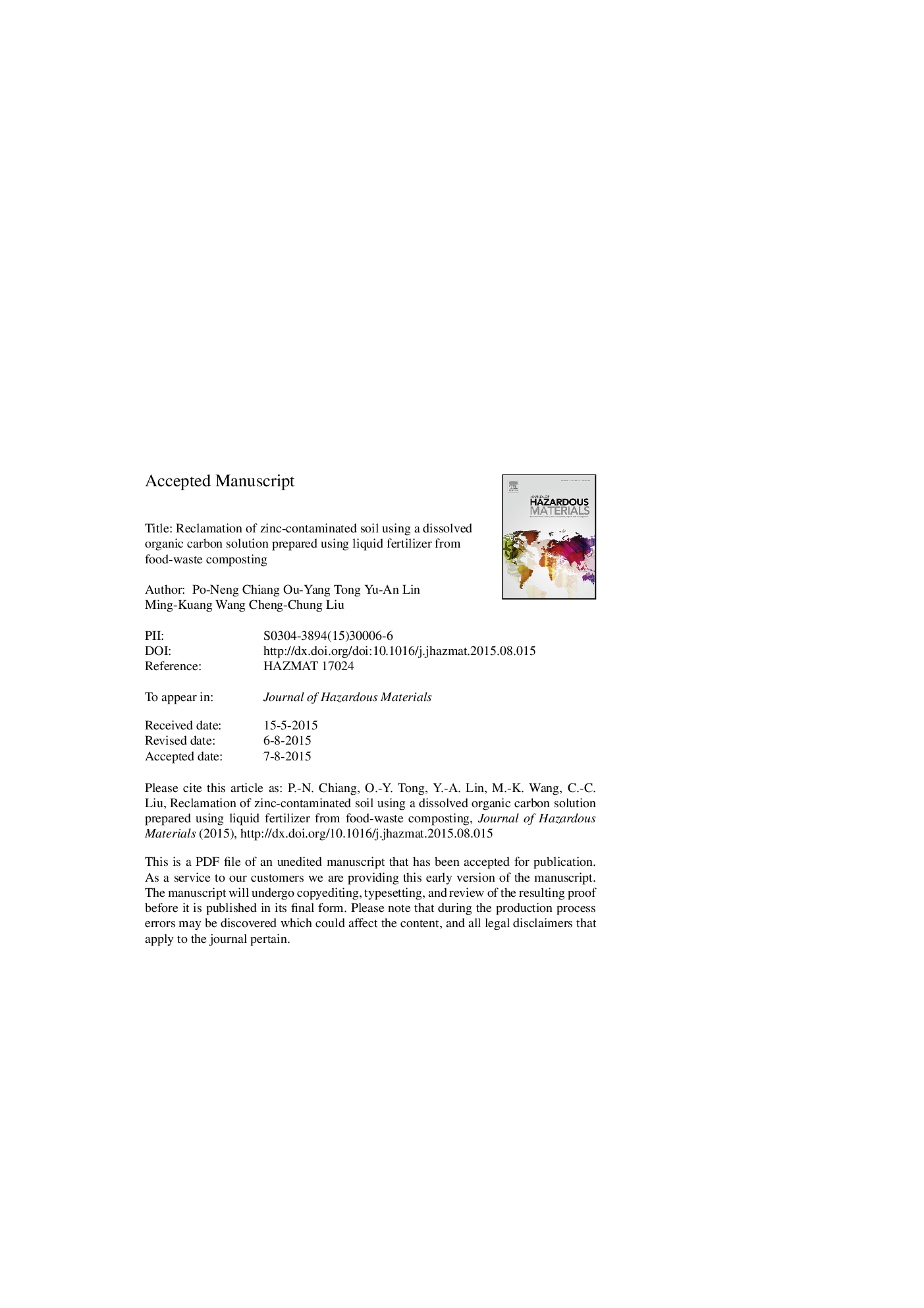| Article ID | Journal | Published Year | Pages | File Type |
|---|---|---|---|---|
| 575779 | Journal of Hazardous Materials | 2016 | 22 Pages |
Abstract
A liquid fertilizer obtained through food-waste composting can be used for the preparation of a dissolved organic carbon (DOC) solution. In this study, we used the DOC solutions for the remediation of a Zn-contaminated soil (with Zn concentrations up to 992 and 757 mg kgâ1 in topsoil and subsoil, respectively). We then determined the factors that affect Zn removal, such as pH, initial concentration of DOC solution, and washing frequency. Measurements using a Fourier Transform infrared spectrometer (FT-IR) revealed that carboxyl and amide were the major functional groups in the DOC solution obtained from the liquid fertilizer. Two soil washes using 1,500 mg Lâ1 DOC solution with a of pH 2.0 at 25 °C removed about 43% and 21% of the initial Zn from the topsoil and subsoil, respectively. Following this treatment, the pH of the soil declined from 5.4 to 4.1; organic matter content slightly increased from 6.2 to 6.5%; available ammonium (NH4+-N) content increased to 2.4 times the original level; and in the topsoil, the available phosphorus content and the exchangeable potassium content increased by 1.65 and 2.53 times their initial levels, respectively.
Related Topics
Physical Sciences and Engineering
Chemical Engineering
Chemical Health and Safety
Authors
Po-Neng Chiang, Ou-Yang Tong, Chyow-San Chiou, Yu-An Lin, Ming-Kuang Wang, Cheng-Chung Liu,
